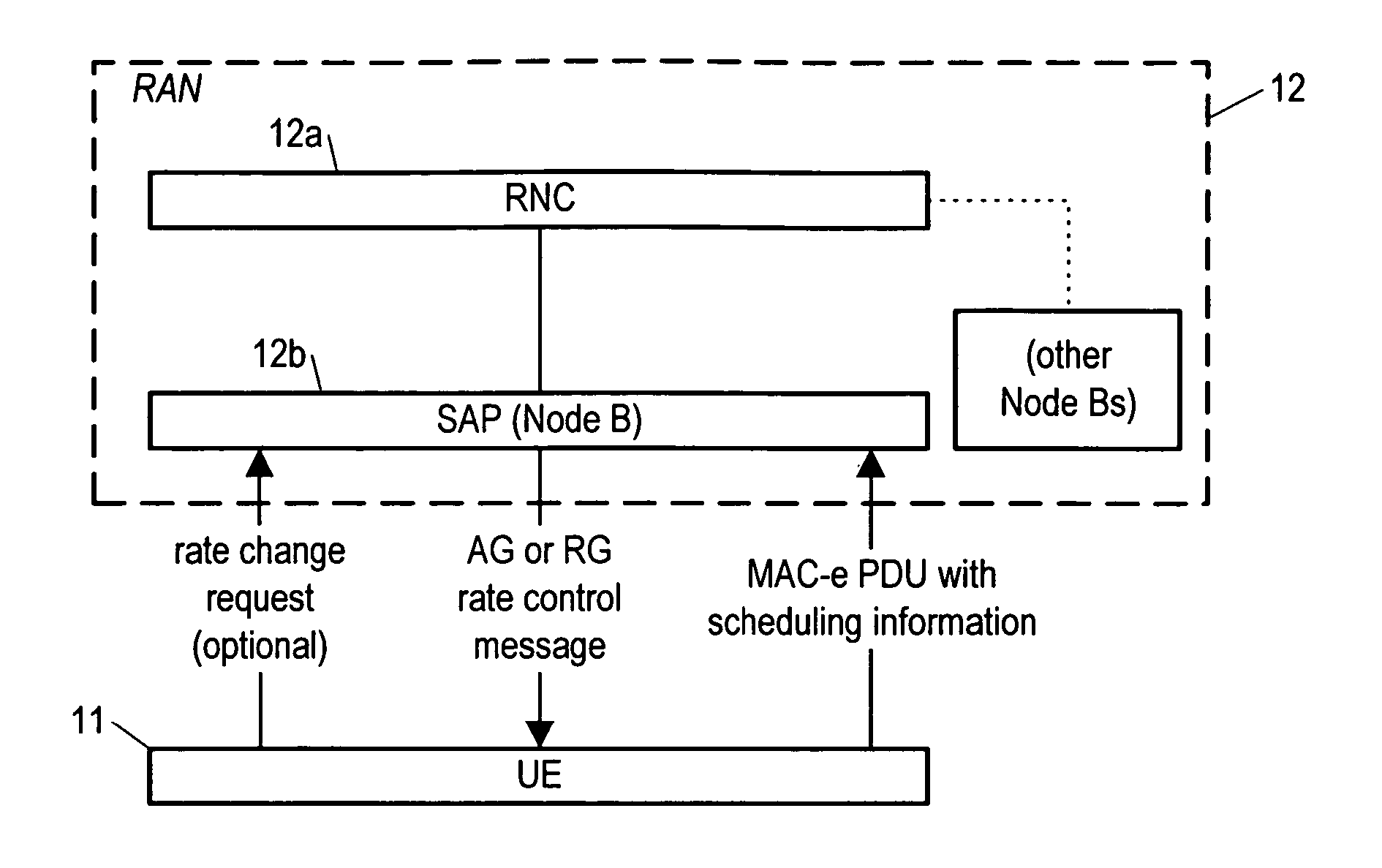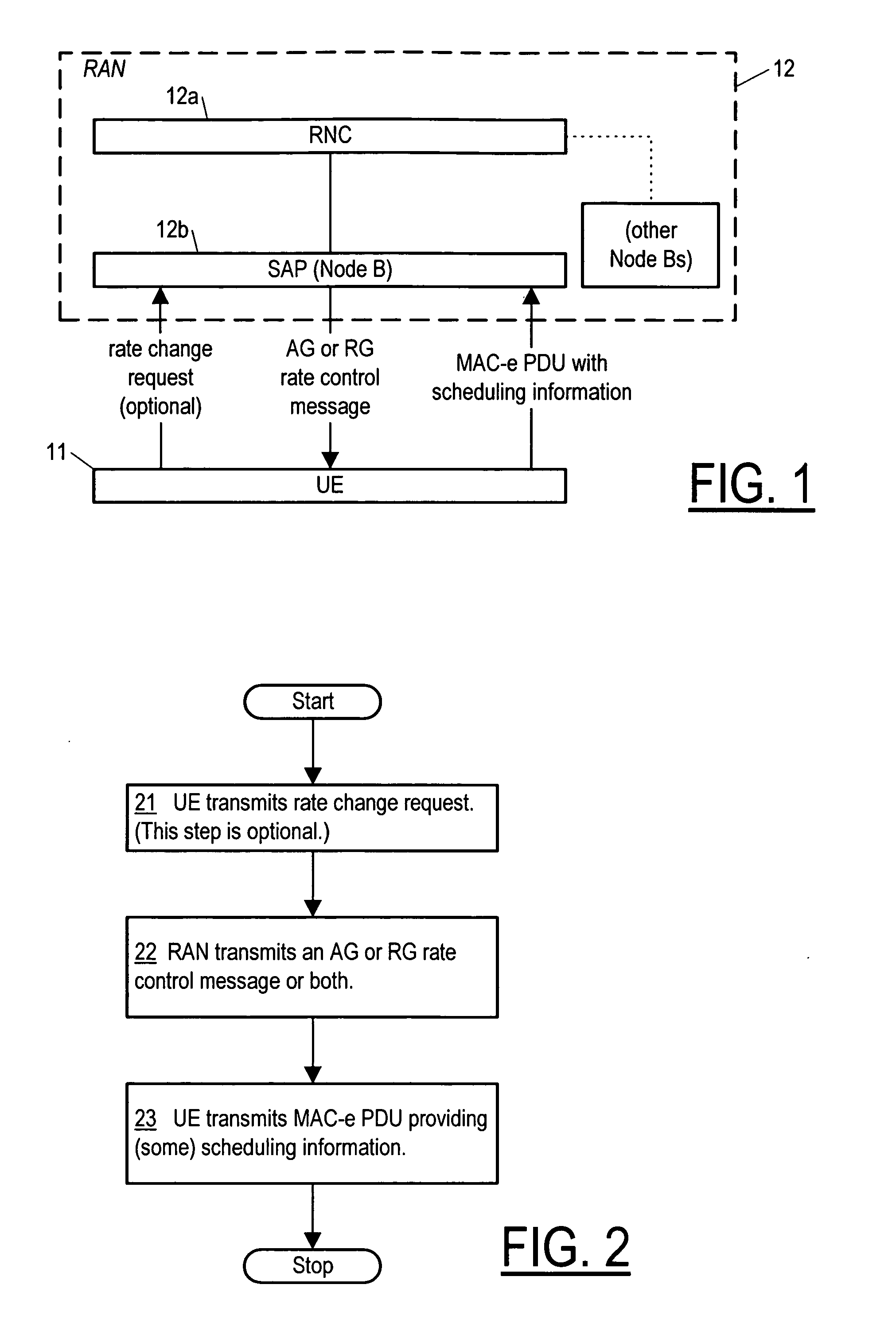Trigger for sending scheduling information in HSUPA
a scheduling information and trigger technology, applied in the field of cellular communication, can solve the problems of not teaching how, inability to rapidly adapt, and inability to efficiently use conservative packet schedulers,
- Summary
- Abstract
- Description
- Claims
- Application Information
AI Technical Summary
Benefits of technology
Problems solved by technology
Method used
Image
Examples
Embodiment Construction
[0023] The invention uses signaling of either of the two EDCH (enhanced dedicated channel) rate control / scheduling messages—the AG and RG messages—as a trigger by a Node-B / SAP (service access point) for prompting a UE (user equipment) terminal to transmit to the Node-B a MAC-e (medium access control-enhanced) control PDU (protocol data unit) carrying scheduling information. According to the invention, whenever a UE receives from a RAN entity (e.g. a Node-B / SAP) an EDCH scheduling message (other than ‘HOLD’ meaning do not change resource usage), whether the scheduling message is RG=UP / DOWN or AG=anything, the EDCH scheduling message triggers the UE to transmit to the RAN entity a MAC-e control PDU carrying scheduling information.
[0024] In some embodiments, the MAC-e control PDU transmitted by the UE contains different information depending on which EDCH scheduling message served as a trigger: if the MAC-e control PDU is triggered by an RG scheduling message, then it would contain on...
PUM
 Login to View More
Login to View More Abstract
Description
Claims
Application Information
 Login to View More
Login to View More - R&D
- Intellectual Property
- Life Sciences
- Materials
- Tech Scout
- Unparalleled Data Quality
- Higher Quality Content
- 60% Fewer Hallucinations
Browse by: Latest US Patents, China's latest patents, Technical Efficacy Thesaurus, Application Domain, Technology Topic, Popular Technical Reports.
© 2025 PatSnap. All rights reserved.Legal|Privacy policy|Modern Slavery Act Transparency Statement|Sitemap|About US| Contact US: help@patsnap.com


